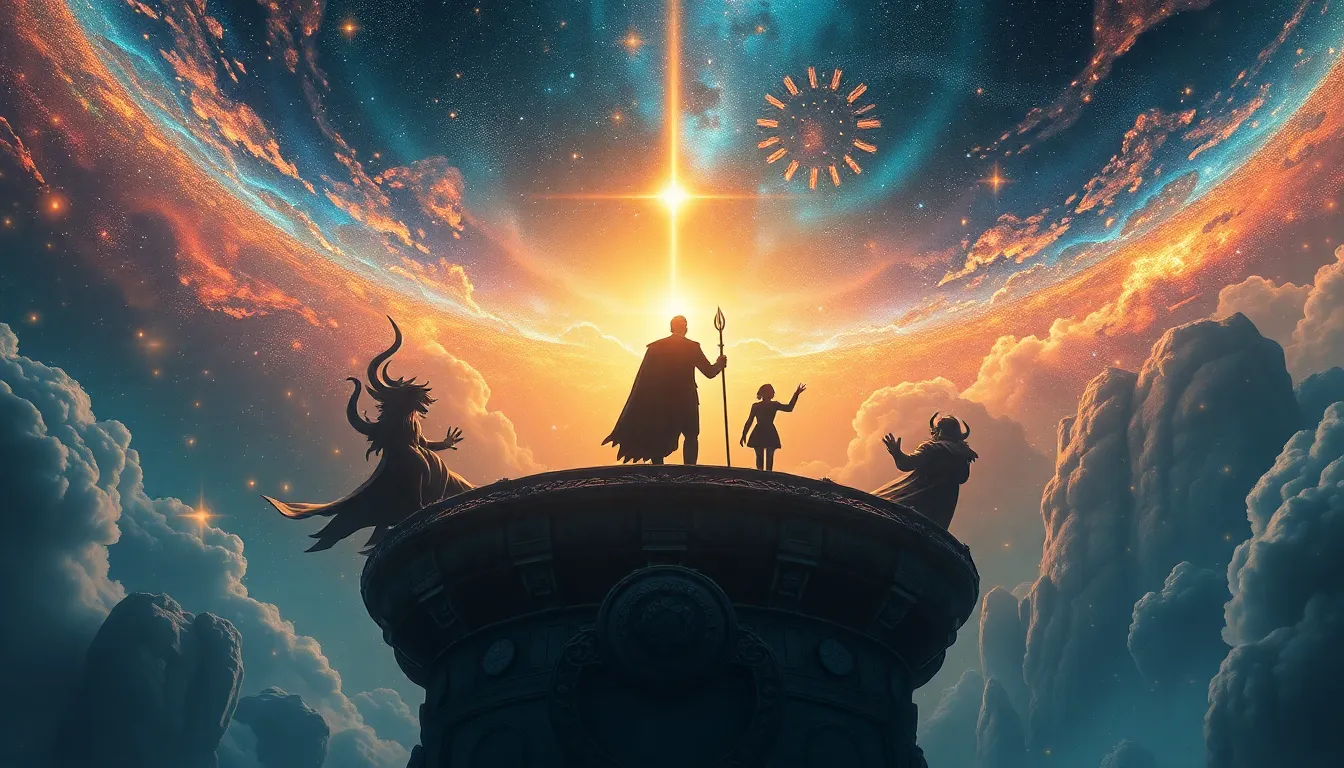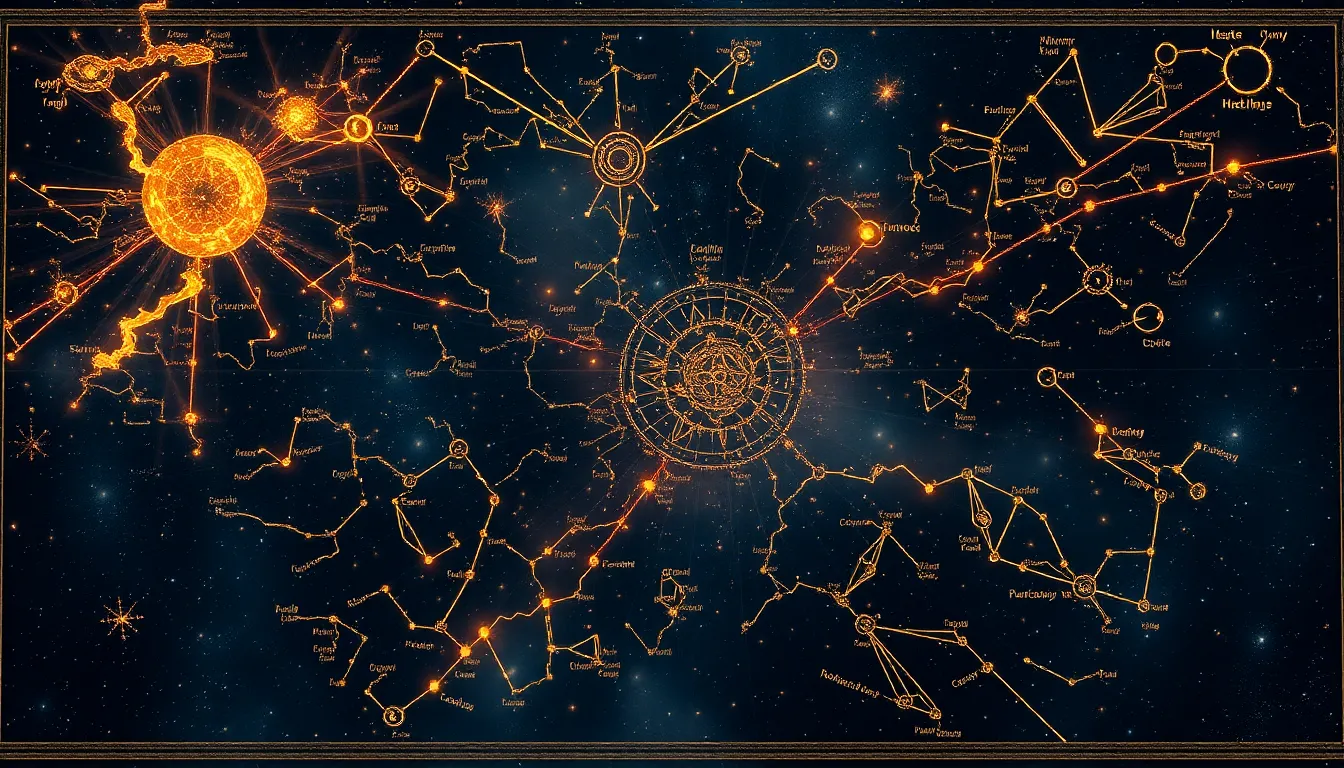End of the World Myths: A Global Perspective
I. Introduction
The concept of the end of the world has fascinated humanity for centuries, spawning a variety of myths and narratives that reflect our deepest fears and hopes. End of the world myths typically revolve around cataclysmic events that lead to a significant transformation or the complete destruction of civilization as we know it.
Examining these myths across different cultures is crucial as they reveal underlying societal values, historical contexts, and existential anxieties. This article will explore the origins of these myths, their religious and cultural dimensions, psychological implications, modern interpretations, and the role of science in understanding potential futures.
The structure of this article will guide you through these themes, providing a comprehensive overview of end of the world myths from a global perspective.
II. Historical Context of Apocalypse Myths
End of the world beliefs can be traced back to ancient civilizations, where they often served as cautionary tales or explanations for natural disasters and societal upheavals.
- Origins of end of the world beliefs in ancient cultures: Many ancient societies, such as the Sumerians and Egyptians, developed cosmologies that included cyclical patterns of creation and destruction.
- The role of religion in shaping apocalyptic narratives: Religious texts, such as the Bible, the Vedas, and the Quran, have played a significant role in formalizing these beliefs, often portraying the end of the world as a divine act of judgment.
- Evolution of these myths through history: Over time, these myths have evolved, adapting to cultural changes and technological advancements, while still retaining their core themes of chaos and renewal.
III. Major Religious Perspectives on the Apocalypse
Different religions offer unique interpretations of the apocalypse, each with their own narratives and prophetic insights.
- Christian eschatology: Central to Christian beliefs is the Book of Revelation, which depicts a series of events leading to the final judgment and the establishment of a new heaven and earth.
- Hindu cosmology: Hindu beliefs include cycles of creation (srishti) and destruction (pralaya), wherein the universe undergoes repeated cycles of birth, existence, and dissolution.
- Islamic beliefs: In Islam, the Day of Judgment (Qiyamah) entails a final reckoning of all souls, where the righteous are rewarded and the sinful face consequences for their actions.
- Indigenous beliefs: Many Indigenous cultures view the end of times in relation to nature, emphasizing a harmonious relationship with the earth and foreseeing dire consequences if that balance is disrupted.
IV. Cultural Variations in End of the World Narratives
The narratives surrounding the end of the world vary widely across cultures, influenced by historical and environmental contexts.
- Western apocalyptic literature and media: In the West, apocalyptic themes are prevalent in literature, films, and television, often portraying dystopian futures shaped by warfare, pandemics, or environmental collapse.
- Eastern perspectives: In East Asian cultures, concepts of the end times may involve philosophical reflections on impermanence, as seen in Buddhist and Taoist teachings.
- African lore: African myths often reflect local ecological challenges, connecting apocalyptic themes to community resilience and adaptation.
- Indigenous North American prophecies: Many Indigenous tribes share prophecies that warn of ecological imbalance and offer guidance for living in harmony with nature.
V. Psychological and Sociological Implications
The fear of the unknown is a powerful motivator that shapes societal behavior and beliefs about the future.
- The fear of the unknown and its impact on society: Apocalyptic myths often arise during periods of uncertainty, reflecting collective anxieties about existential threats.
- How end of the world myths reflect societal issues: These narratives can mirror pressing social issues, such as climate change, political instability, and technological fears.
- Coping mechanisms and collective anxiety: Myths serve as coping mechanisms, allowing societies to process fears and envision potential futures, whether hopeful or catastrophic.
VI. Modern Interpretations of Apocalypse Myths
In the contemporary world, new interpretations of end of the world myths are emerging, often influenced by technology and global crises.
- The influence of technology and climate change: Modern fears about climate change, nuclear war, and technological disasters are reshaping traditional apocalyptic narratives.
- Popular culture: Movies, books, and video games often explore apocalyptic themes, reflecting societal concerns and engaging audiences in speculative scenarios.
- The role of social media: Social media platforms have amplified the spread of apocalyptic narratives, often leading to misinformation and heightened anxieties.
VII. Case Studies of Prominent End of the World Predictions
Throughout history, specific predictions have captured public attention, often leading to widespread panic or curiosity.
- Y2K and the digital apocalypse: The Year 2000 bug prompted fears of a global technological collapse, illustrating how digital anxieties can manifest as apocalyptic concerns.
- The Mayan Calendar prediction of 2012: Many believed that December 21, 2012, would mark the end of the world, leading to significant cultural and media phenomena.
- Recent predictions: The COVID-19 pandemic and growing fears related to climate change have ignited new waves of apocalyptic thinking, reshaping public discourse.
VIII. The Role of Science vs. Myth in Understanding the Future
As society grapples with complex global challenges, the relationship between scientific understanding and mythological narratives becomes increasingly relevant.
- Scientific approaches to predicting global disasters: Scientists utilize data and models to predict potential global disasters, providing a rational basis for understanding risks.
- The interplay between myth and reality in public perception: Myths often fill the gaps in scientific understanding, influencing how people perceive and respond to actual threats.
- Educating society on distinguishing fact from fiction: It is essential to promote scientific literacy to help individuals navigate the complex landscape of disaster predictions and apocalyptic narratives.
IX. Conclusion
Studying end of the world myths is significant as they provide insights into human psychology, cultural values, and historical contexts. These narratives remain relevant in contemporary society, reflecting our anxieties about the future.
As we face global challenges, understanding the implications of these apocalyptic beliefs can aid in crafting collective responses and fostering resilience. Looking ahead, the evolution of apocalyptic narratives will continue to shape our perceptions and responses to the uncertainties of our time.
X. References and Further Reading
For those interested in delving deeper into the topic of apocalyptic myths, the following resources may be helpful:
- Books:
- “The End of the World: A History” by John H. L. Smith
- “Apocalypse: A History of the End of the World” by John Michael Greer
- Articles:
- “The Psychology of Apocalyptic Beliefs” – Journal of Social Issues
- “Cultural Perspectives on the Apocalypse” – International Journal of Cultural Studies
- Documentaries and films:
- “The Four Horsemen of the Apocalypse” (Documentary)
- “Children of Men” (Film)



